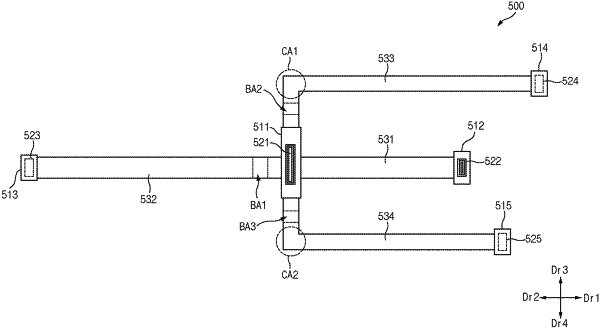| CPC H05K 1/189 (2013.01) [H05K 1/028 (2013.01); H05K 1/118 (2013.01); H05K 1/148 (2013.01)] | 20 Claims |

|
1. An electronic device comprising:
a housing including a frame, a first temple connected to one side of the frame, and a second temple connected to the other side of the frame;
a first printed circuit board (PCB) positioned in the first temple; and
a flexible printed circuit board electrically connected to the first PCB,
wherein the flexible printed circuit board includes:
a first rigid portion connected to the first PCB;
a first flexible portion extending from a first side of the first rigid portion in a first direction;
a second flexible portion extending from a second side of the first rigid portion in a second direction different from the first direction, the second flexible portion being bent in a first bending area to overlap at least a portion of the first flexible portion; and
a third flexible portion extending from a third side of the first rigid portion in a third direction different from the first and second directions, the third flexible portion being bent in a second bending area and curved in a curving area to overlap at least a portion of the first flexible portion and at least a portion of the second flexible portion, wherein the third direction is opposite to the first direction,
wherein the first flexible portion extends from the first rigid portion in the first direction without overlapping the first rigid portion.
|